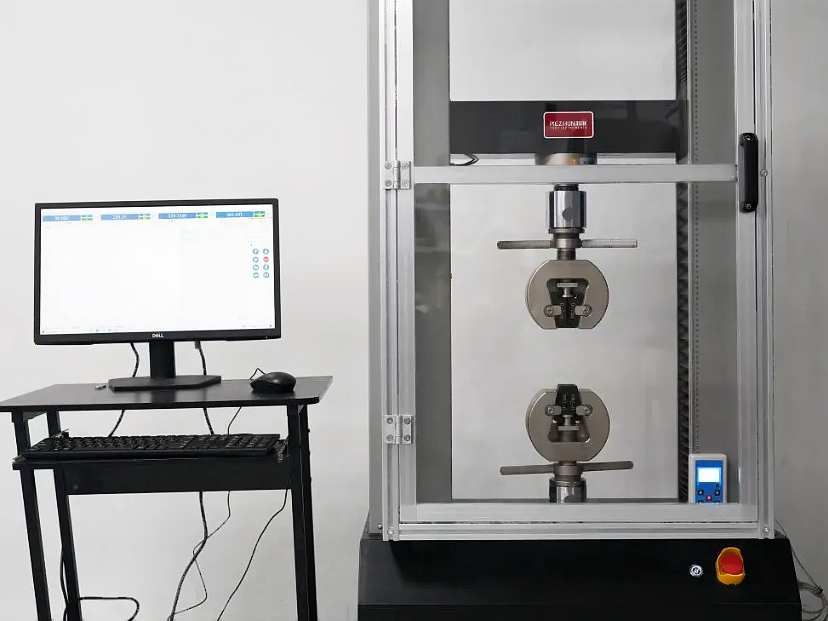Ensuring Strength & Durability: Mechanical Property Testing for Reliable Metal Casting
Introduction
Ensuring the strength, durability, and consistent performance of finished components is crucial in metal casting. Mechanical property testing evaluates critical material attributes, confirming that castings reliably meet stringent quality requirements and industry standards. At Neway, our comprehensive mechanical testing protocols guarantee robust, high-performance metal castings suitable for demanding automotive, aerospace, iand ndustrial equipment applications.
Why Mechanical Property Testing Matters
Mechanical testing validates cast metal components' integrity, performance, and reliability. Accurate measurement and verification of mechanical properties help manufacturers to:
Ensure compliance with industry-specific requirements (ASTM, ISO, JIS standards).
Minimize risks of failure due to mechanical stresses or fatigue.
Confirm material consistency across batches, reducing variability by up to 90%.
Guarantee the longevity and durability of critical components.
Provide accurate performance data to customers and end-users.
Manufacturers significantly enhance quality assurance, improve product reliability, and support confident engineering decisions by implementing standardized mechanical property tests.
Key Mechanical Tests for Metal Casting
At Neway, we employ a range of standardized mechanical property tests to assess critical attributes of cast components:
Tensile Testing (ASTM E8/E8M)
Tensile testing measures the material’s response to pulling force, determining critical values such as:
Ultimate Tensile Strength (UTS): Maximum load a material can withstand before breaking (e.g., Aluminum Alloy A380 typically 324 MPa).
Yield Strength: Stress at which permanent deformation begins (e.g., Zinc Zamak 3: ~208 MPa).
Elongation at Break: Material ductility (% elongation), vital for impact resistance and flexibility.
Hardness Testing (ASTM E18, ASTM E10)
Hardness testing evaluates a material's resistance to indentation or deformation:
Rockwell Hardness (HRC, HRB): Commonly used for harder alloys, e.g., H13 steel die materials typically measure around 48–52 HRC.
Brinell Hardness (HB): Suitable for softer metals such as aluminum alloys (A356 aluminum typically 70–90 HB).
Impact Testing (ASTM E23, ISO 148)
Impact testing assesses material toughness and resistance to sudden impacts:
Charpy Impact Test: Measures energy absorbed during fracture, critical for materials subject to dynamic loading conditions.
Typical values for aluminum castings like AC8A alloy exceed 8–10 Joules at room temperature, ensuring reliable structural integrity under impact conditions.
Fatigue Testing (ASTM E466, ISO 1143)
Fatigue testing evaluates material durability under cyclic loading, confirming resistance to repetitive stress and vibration:
Determines fatigue limit (endurance limit) or fatigue strength at specified cycles (e.g., 10^6 cycles).
Essential for automotive suspension components, aerospace brackets, and other dynamic applications.
Standards and Compliance
All mechanical property testing conducted at Neway adheres strictly to globally recognized standards, ensuring traceable and reproducible results:
Testing Method | Relevant Standards |
|---|---|
Tensile Testing | ASTM E8/E8M, ISO 6892 |
Hardness Testing | ASTM E18 (Rockwell), ASTM E10 (Brinell) |
Impact Testing | ASTM E23 (Charpy), ISO 148 |
Fatigue Testing | ASTM E466, ISO 1143 |
General Compliance | ISO 9001, IATF 16949, AS9100 |
Our strict adherence to these standards ensures comprehensive quality control and confidence in the mechanical performance of your metal castings.
Importance of Material Selection and Validation
Selecting and validating suitable casting materials is critical. Mechanical testing allows engineers to validate material suitability for specific applications:
Aluminum alloys such as A380 or AC8A offer excellent strength-to-weight ratios, making them ideal for lightweight automotive components.
Zinc alloys (Zamak 3, ZA-8) provide high precision and superior surface finishes suitable for consumer electronics and precision components.
Copper alloys (Brass 360, C18200) demonstrate excellent thermal and electrical conductivity, perfect for electrical applications.
Quality Assurance and Testing Capabilities
Neway’s mechanical property testing protocols ensure consistent product quality through:
State-of-the-Art Testing Labs: Equipped with calibrated, certified testing equipment ensuring results within ±1% accuracy.
Skilled Technicians and Engineers: Qualified personnel conducting tests in accordance with ASTM and ISO standards, ensuring reliable results and full compliance.
Comprehensive Documentation: Detailed test reports, certifications, and traceability documents provided with each batch of castings, meeting customer requirements and international regulations (RoHS, REACH compliance).
Case Study: Automotive Die Cast Component Validation
An automotive OEM required validation of aluminum suspension parts to ensure durability and compliance with automotive safety standards:
Tensile testing confirmed UTS of 310–330 MPa, ensuring structural performance.
Charpy impact tests exceeded 10 Joules at ambient temperature, demonstrating reliable toughness.
Fatigue testing demonstrated component durability exceeding 1,000,000 cycles without failure.
As a result, the validated components successfully met stringent automotive industry specifications, providing confidence in their long-term performance and safety.
Why Choose Neway for Mechanical Property Testing?
Advantage | Specification & Details |
|---|---|
Certified Testing Protocols | ASTM, ISO, JIS compliant mechanical tests |
Material Expertise | Aluminum, zinc, copper alloys, tool steels |
Precision and Accuracy | Testing accuracy within ±1%, fully calibrated equipment |
Comprehensive Reporting | Full documentation, traceability, compliance certificates |
Customer Confidence | Reliable results, proven product performance |
Conclusion
Mechanical property testing is essential in confirming metal cast components' strength, durability, and reliability. At Neway, our comprehensive testing protocols and industry-leading expertise ensure your castings meet the highest performance, durability, and compliance standards.
Choose Neway for validated, reliable, and durable metal casting solutions backed by rigorous mechanical testing.
FAQs
What mechanical property tests are essential for metal castings?
How does mechanical testing ensure compliance with industry standards?
Which mechanical properties are critical for automotive and aerospace components?
What standards govern mechanical property testing for cast metals?
How does material selection impact the mechanical properties of cast components?

